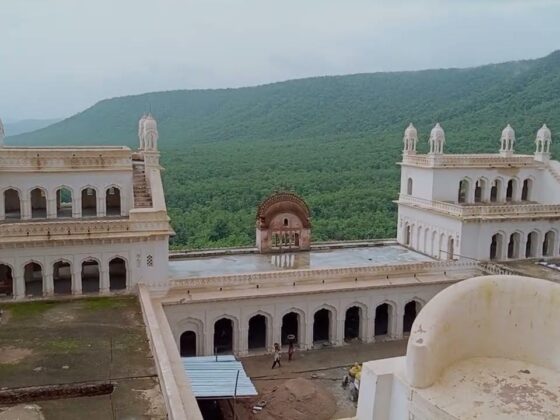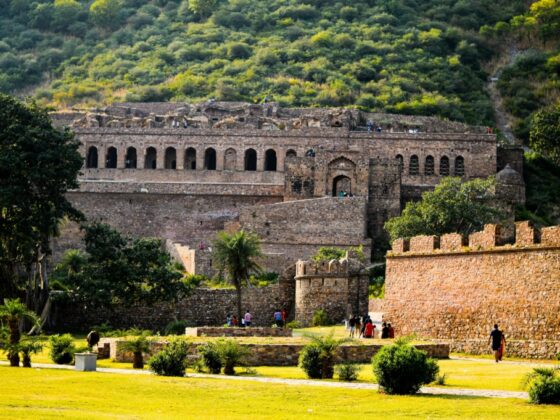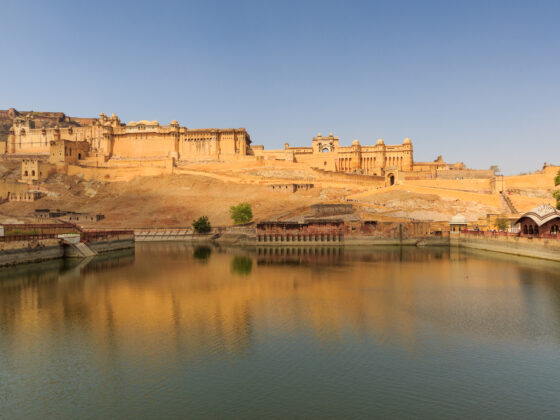Introduction
Nestled in central India, the princely states of Rajgarh and Narsinghgarh boast architectural legacies rooted in the reign of the Umath Rajput dynasty. Though centuries have passed, their forts, palaces, temples, and lakes still speak volumes about past grandeur. Each ruined wall and carved arch reflects a story of regional pride, spiritual devotion, and artistic finesse. The Rajgarh royal family architecture showcases majestic forts, grand palaces, and sacred temples that reflect the dynasty’s legacy and cultural richness.

Rajgarh Fort – A Hilltop Fortress with History
Set atop a hill overlooking the Nevaj River, Rajgarh Fort once served as both residence and refuge for the ruling Rajgarh family. Its architecture prioritized defense with high walls, bastions, and narrow gateways, while also displaying royal elegance through polished courtyards and finely carved balconies.
Today, locals occupy parts of the structure, while other portions handed over to the state now stand neglected. Despite its condition, the fort remains central to regional identity, representing a tangible link to the past.
Kanwarpati Palace – From Royal Women’s Quarters to Administrative Hub
Built as a residence for the royal women, Kanwarpati Palace now hosts a branch of the State Bank of India, government offices, and cooperative societies. Its sturdy courtyards, arched corridors, and decorative windows still offer glimpses of former royal life, even as everyday commerce takes place within its walls. This palace illustrates how historic buildings continue to serve modern needs, blending heritage and utility.
Bada Mahal – A Majestic Structure in Decay
Once an important venue for royal gatherings and public administration, Bada Mahal today lies abandoned. Declared unsafe by local authorities, its empty halls and crumbling pillars convey a sense of lost legacy. This palace serves as a reminder that without intervention, even significant landmarks can vanish from public memory.
Narsinghgarh Fort – Nature’s Fortress and Regal Beauty
Surrounded by lush hills and built beside Parasram Sagar, Narsinghgarh Fort combines tactical design with scenic beauty. Designed in a fusion of Rajput and Mughal architectural styles, its structures blend slender domes, lattice stonework, and fortified walls. Still held by the royal family’s descendants, the fort overlooks fertile plains and remains known for its cool climate and tranquil ambiance—a reason locals fondly refer to it as the “Mini Kashmir of Malwa.”
Hidden Gems Around the Region
Patan Fort Ruins
Four miles from Rajgarh town, the remains of Patan Fort stand quietly in a wooded landscape. This was the refuge after Ratanpur fell. Now overgrown and silent, the ruins contain stones that witness the upheaval faced by the Umath dynasty.
Shyam Ji Ka Sankha
Nestled near Narsinghgarh in the Kotra tehsil, this sacred site is closely tied to the Umath Rajput clan. It remains a focal point for ritual worship and historical remembrance.
Sati Sthaan at Ratanpur
This site marks where Rawat Chhatar Singh performed self-sacrifice (saka) and his royal family committed jauhar—the tragic symbols of honor. It also signifies the Umaths’ shift from worshiping Chaturbhujnath to Lord Narasimha, underscoring a spiritual transformation enshrined in clan history.
Chidikhoh Lake & Wildlife Sanctuary
Located near Rajgarh, this sanctuary hosts diverse wildlife and serene waters. Its surroundings offer both spiritual peace and ecological wonder, giving visitors a holistic experience of nature and heritage.
Baz Bahadur and Roopmati Tomb at Sarangpur
Though more commonly linked with Mandu, legend connects the iconic lovers Baz Bahadur and Roopmati to Sarangpur. Their tomb adds a layer of romantic mythology to the region’s cultural heritage.
Clearing the Oberoi Hotel Confusion
To avoid confusion:
-
No Oberoi Hotel exists in Rajgarh district.
-
A property called “Rajgarh Palace Hotel” runs under the Oberoi brand—but it is located in Chhatarpur district, not within Rajgarh territory.
Closing Reflections
The Rajgarh royal family architecture—through its forts, palaces, and temples—reminds us of a time when art, power, and devotion merged. These landmarks deserve greater attention and care. Many still stand, waiting to reveal their stories to curious visitors and scholars alike.
By restoring and promoting these sites, we not only safeguard stone and mortar but also honor an enduring legacy: one of dignity, creativity, and cultural depth. Heritage conservation today can transform these structures into living symbols of identity and pride.








